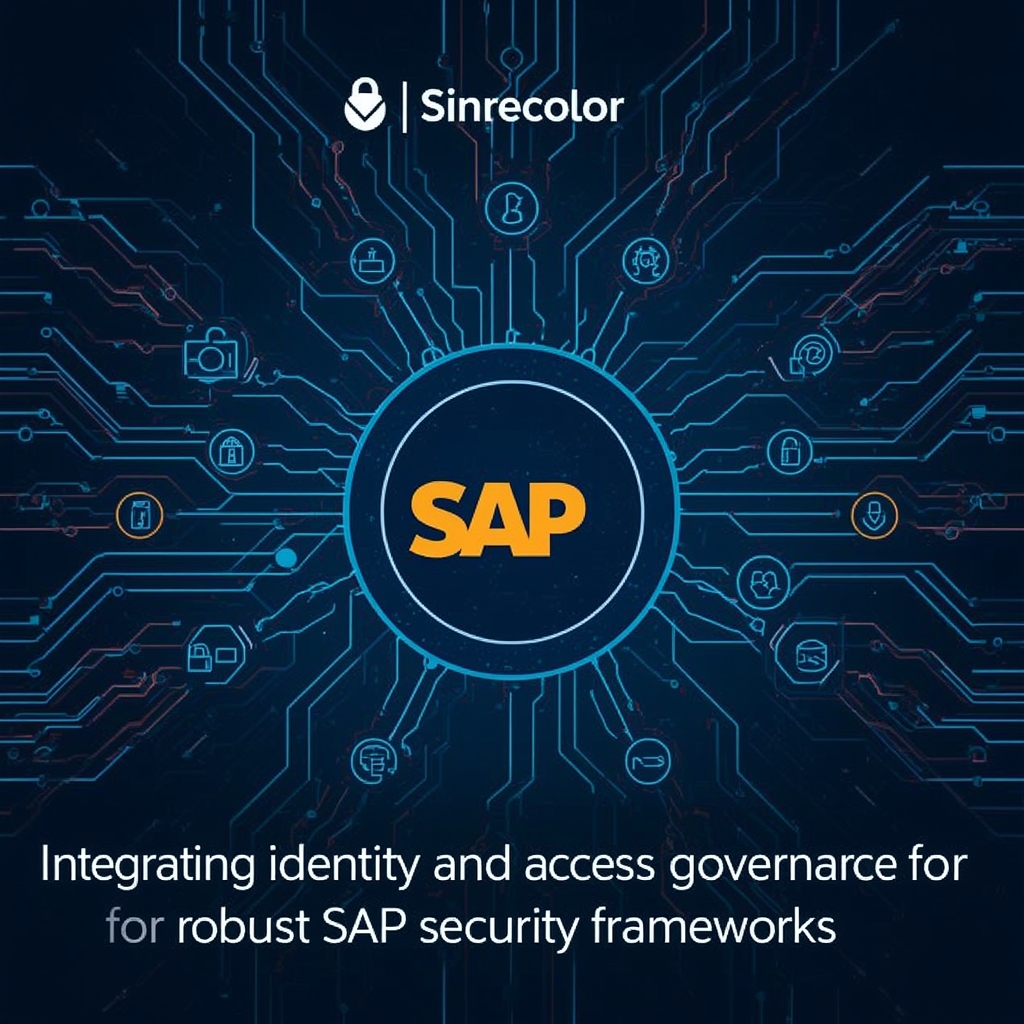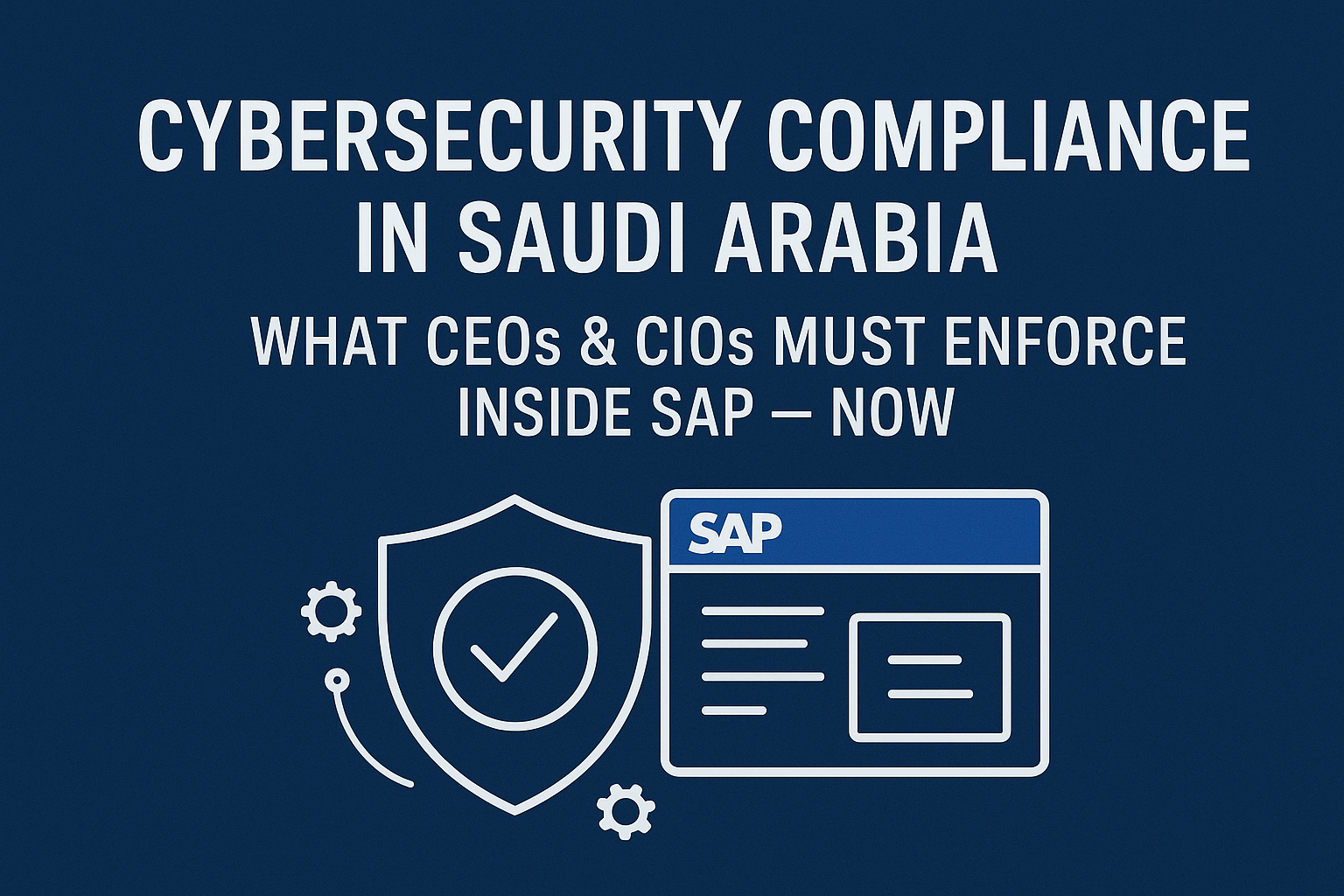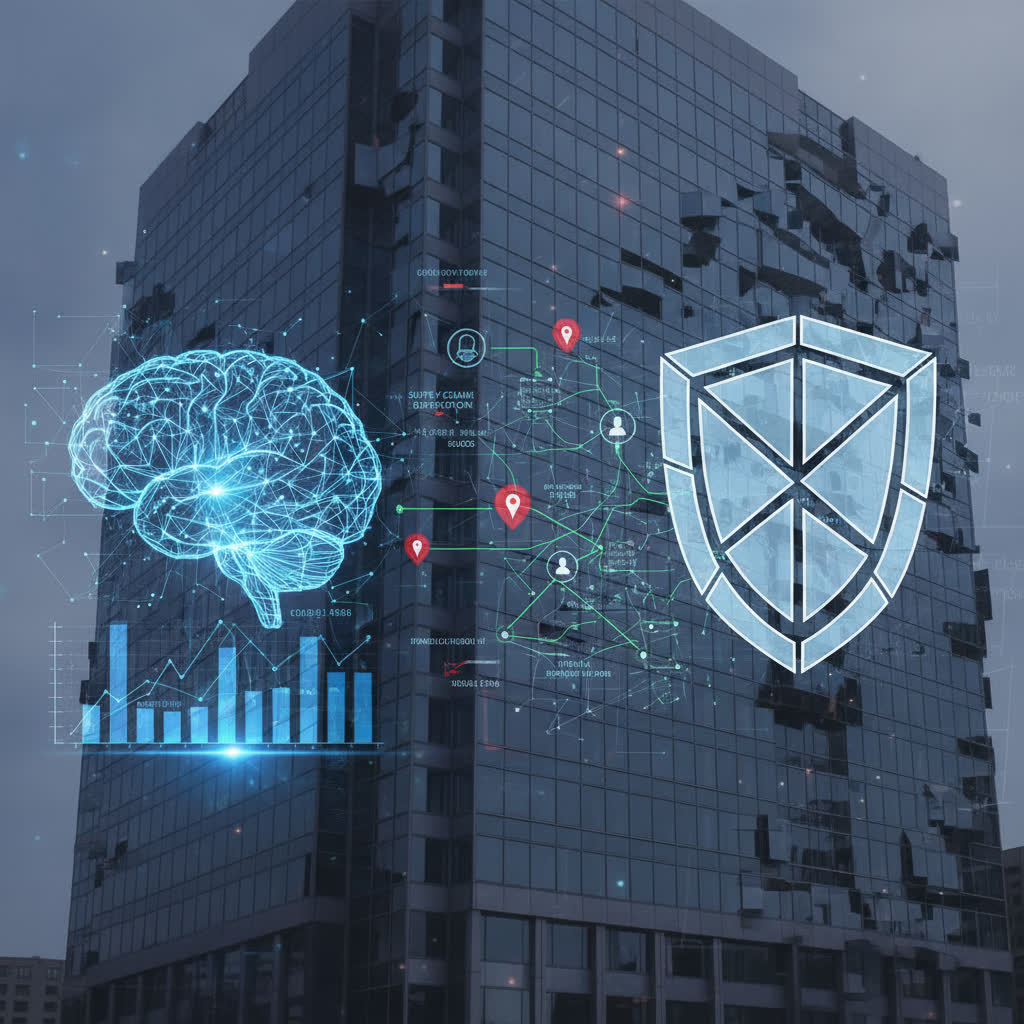Organizations rely on SAP systems to manage sensitive business processes and store valuable data. As digital operations expand, so does the complexity of safeguarding information and maintaining business continuity. One area that consistently demands attention is the intersection between identity management and access governance. Strengthening this foundation is no longer optional. It is a necessity for any company seeking resilience and security.
Understanding the Importance of Identity and Access Governance in SAP Environments
At its core, identity and access governance refers to the controls and processes used to verify users' identities and determine what resources they can access within an information system. In SAP platforms, the stakes are particularly high due to the broad range of financial, operational, and personal data stored. SAP systems function at the heart of global supply chains, human resources, procurement, and finance. Unauthorized or unrestricted access can result in significant financial losses, regulatory penalties, or reputational harm. Proper governance helps ensure only authorized persons have access to necessary resources and that these rights are regularly reviewed and updated.
The Evolving Threat Landscape
Cyber threats targeting ERP systems have become more advanced and frequent. Attackers are quick to exploit vulnerabilities that stem from mismanaged access or outdated permissions. Moreover, insider threats—unintentional mistakes or malicious actions by employees—continue to pose a significant risk. Organizations that ignore identity and access controls may be left exposed to sabotage, fraud, or data leaks. Traditional approaches that rely solely on perimeter network security can no longer provide enough protection.
Core Components of Identity and Access Governance in SAP
Strong governance in SAP systems involves a multifaceted approach. It typically includes user provisioning and deprovisioning, access request management, policies for segregation of duties (SoD), regular access reviews, and controls for privileged user activities. Effective governance creates order and consistency, which simplifies audits and bolsters transparency.
User Provisioning and Lifecycle Management
Managing user accounts in SAP is a continuous process. It begins the moment a new employee joins the company and ends when they depart or change roles. Automating provisioning ensures new accounts receive only necessary permissions based on clearly defined job functions. Lifecycle management tracks changes resulting from promotions, transfers, or terminations, thereby reducing the risk of orphaned accounts and excessive access rights.
Access Request Management
Employees' access needs may evolve as they assume new responsibilities. Allowing users to request additional access in a controlled environment, with automated workflows for manager or compliance approval, helps address genuine requirements while preventing unnecessary privilege escalations. These workflows create a detailed audit trail for all access-granting activities, increasing transparency.
Segregation of Duties (SoD) Policies
Segregation of duties is a crucial concept in access governance. It ensures that no single individual holds conflicting permissions that could enable them to circumvent controls—such as both creating and approving payments. Well-defined SoD policies restrict access combinations that could introduce risks and flag violations for review. Maintaining SoD also helps with regulatory compliance, including GDPR and SOX, by reducing the likelihood of fraud or errors.
The Role of Technology: Automating Access Governance
Manual processes are prone to errors, inconsistencies, and delays. Integrating automated identity and access management (IAM) tools into SAP systems streamlines approval workflows, provision and deprovision access, monitor activity, and generate compliance reports. These solutions support granular access controls and facilitate timely responses to access change requests or detected anomalies. Automation also reduces the overhead on IT and security teams, allowing them to focus on more strategic initiatives.
Minimizing Risk with Automated Review Cycles
Periodic reviews of user access help organizations maintain compliance and address dormant or excessive rights. By automating these reviews, companies can ensure that managers regularly confirm or revoke access based on current job responsibilities. Automated reminders and escalation protocols help prevent lapses. These practices also provide evidence for auditors who want to verify that controls work as intended.
Role-Based Access Control (RBAC) in SAP Systems Role-based access control assigns users to roles based on business function. Each role contains necessary permissions to accomplish specific tasks but no more. RBAC reduces the likelihood of privilege creep, in which users accumulate excessive rights over time. It creates a clear structure for assigning permissions, simplifies onboarding, and speeds up response to staff changes. RBAC is particularly effective in large-scale SAP environments where the complexity of user permissions can quickly become unmanageable.Balancing Security and Usability in Access Governance
Security must never come at the expense of user productivity. Implementing stringent controls may slow down business operations or prompt employees to seek workarounds. Access governance strategies should balance risk mitigation with practical usability. Involve key stakeholders—including HR, IT, and business unit leaders—in designing workflows and setting approval thresholds. Open communication helps reduce friction, ensuring users understand the rationale behind security measures and how to follow them effectively.
Self-Service Portals for Access RequestsEmpowering users with self-service portals delivers convenience while maintaining oversight. Staff can view their current rights, request changes, and track approval status. This direct access speeds up routine tasks and reduces support desk burden. By integrating education and guidance into the portal, companies can help employees make informed requests and understand the risks associated with elevated privileges.
Meeting Compliance Standards Through Better Governance
Noncompliance with regulations like GDPR, SOX, or ISO 27001 exposes organizations to substantial fines and reputational risks. These standards require demonstrable controls over personal data, financial information, and access privileges. Automated identity and access governance solutions produce detailed logs, audit trails, and reports necessary for external audits. By embedding compliance requirements into access policies and approval workflows, companies can anticipate auditors' needs, close security gaps, and demonstrate accountability.
Streamlining Audit Preparation
Efficient governance ensures all user activities are recorded and retrievable for inspection. Centralized logs provide evidence of access requests, approvals, reviews, and incident responses. When preparing for an audit, access governance tools allow companies to generate required documentation quickly. Structured workflows and documentation accelerate the audit process and reduce anxiety for staff.
Adapting Identity and Access Management to Cloud and Hybrid SAP Landscapes
Many organizations now operate hybrid SAP environments that combine on-premises and cloud resources. This evolution introduces new challenges in managing access controls consistently across different platforms. Unified identity management and governance frameworks address these issues by keeping policies and enforcement mechanisms aligned, regardless of where the resource resides.
Single Sign-On (SSO) and Federated Identity
Single sign-on simplifies the user experience by allowing one set of credentials to access multiple systems, both in the cloud and on-premises. Federated identity management extends this idea, linking identity providers across organizations. When implemented effectively, these solutions reduce password fatigue, improve productivity, and tighten security through centralized oversight. Rigorous authentication policies and routine monitoring are necessary to mitigate risks related to credential sharing or compromise.
The Human Element in SAP Security Frameworks
Technology plays a vital role, but robust access governance also depends on human vigilance and cooperation. Ongoing security awareness training helps staff recognize threats and avoid risky behaviors. Employees need to understand why secure access protocols matter. Regular communication about security incidents, phishing attempts, or new policies keeps everyone engaged in protecting the organization’s assets.
Continuous Education and Policy Enforcement
Periodic refresher courses ensure staff remember their responsibilities around data privacy and access management. Policy enforcement should rely on both technical controls and management support. Consistent reinforcement of security rules, combined with clear consequences for noncompliance, reduces the likelihood of negligent or malicious actions.
Migrating to S/4HANA: Identity and Access Challenges
The migration toward S/4HANA—a modern iteration of SAP’s core applications—represents a substantial opportunity for many businesses. However, such transitions can reveal weaknesses in existing access governance frameworks. Companies must harmonize legacy permissions with new role structures, often under tight project timelines. Without careful attention, organizations risk inheriting outdated permissions or creating gaps during the migration process.
Role Redesign and Legacy Systems
Constructing effective roles in the new environment requires rigorous mapping from legacy permissions. Teams should review existing access rights, retire obsolete roles, and define new ones that reflect current business needs. Testing and simulation help identify conflicts or SoD violations before the new system goes live. Post-migration, organizations should schedule comprehensive reviews to validate that the new setup meets both security and operational requirements.
Incident Response and Access Governance
Despite best efforts, breaches or access violations may still occur. An incident response plan establishes clear steps for detecting, reporting, and mitigating these incidents. Automated tools can provide early detection of suspicious access patterns, signaling potential problems. Rapid isolation of compromised accounts or escalation of corrective actions can limit the impact and demonstrate due diligence to regulators and stakeholders.
Monitoring and Analytics for Proactive Security
Continuous monitoring of access-related events is essential. Behavior analytics can uncover subtle anomalies, such as access outside normal hours or attempts to reach restricted data. Combining log aggregation with machine learning helps identify threats that static rules might miss. Integrating monitoring platforms with access governance solutions allows for a coordinated defense that covers both preventative and detective controls.
The Value of Regular Governance Reviews and Upgrades
Industry standards, business processes, and regulatory mandates evolve over time. Periodic reviews of identity and access governance practices ensure they remain relevant and robust. These reviews should assess policies, user roles, SoD configurations, and technical controls. Companies should reserve time and resources for periodic upgrades of technology stacks, including patching known vulnerabilities and introducing new efficiencies.
Stakeholder Engagement and Policy Modernization
Engaging a broad cross-section of internal stakeholders for governance reviews ensures no single team overlooks emerging needs. Business units, IT, security, and compliance should collaborate when updating policies or technology. A clear change management process helps teams respond quickly to organizational shifts, mergers, or regulatory developments. Policy modernization is more than a technical issue. It must also reflect business goals and risk tolerance.
Future Trends in Identity and Access Governance for SAP
The way companies manage identity and access in SAP systems will continue to shift. Several forward-looking trends are shaping the future. One is the greater adoption of artificial intelligence and machine learning in access governance. These technologies help recognize normal and abnormal behavior patterns more quickly. Another trend is the move toward zero trust architectures, where no user or device is trusted by default, regardless of location.
Zero Trust and Advanced Authentication Methods
Zero trust models assume attackers may already be inside the network perimeter and focus on constant verification of user identity and intent. Advanced authentication methods, including biometrics and adaptive authentication, provide additional assurance that only legitimate users gain access. Integrating zero trust principles into SAP access governance requires ongoing investment, but it can significantly enhance security posture.
The Organizational Benefits of Integrated Identity and Access Governance
Strong identity and access governance delivers clear organizational benefits. Effective controls protect sensitive data, support regulatory compliance, and minimize exposure to internal and external threats. They also enable consistent and efficient onboarding, offboarding, and employee movement across the organization. By standardizing access management practices, companies foster trust and accountability both internally and with partners or clients.
Cost Optimization and Operational Efficiency
Automating access governance processes reduces manual workloads and associated costs. Policy-driven access requests and automated approvals cut down on delays. Regular rights reviews help identify unused accounts or resources, saving on licensing fees and reducing system clutter. Improved efficiency directly contributes to better business outcomes and a more secure working environment.
Continuous Improvement and Security Culture
Access governance must be an ongoing effort. Threats evolve and regulatory expectations shift. Organizations benefit from adopting a culture that values proactive security, continuous education, and process improvement. Sharing lessons learned from security incidents or successful audits helps teams avoid repeating the same mistakes. Encouraging feedback from employees helps identify pain points or misunderstandings that could weaken defenses.
Integrating Security with Business Objectives
Security should never sit in isolation from broader business priorities. Aligning identity and access governance strategies with organizational goals ensures security activities support rather than hinder progress. Involving leadership in security planning creates a sense of shared responsibility. Routine updates on governance performance and incident metrics keep everyone informed and committed.
Industry Collaboration and Knowledge Sharing
Peer collaboration is an often-overlooked component of strong identity and access governance. Industry groups, standards bodies, and online forums provide valuable insight into best practices, new tools, and emerging threats. Participating in these communities helps organizations stay ahead of trends, benchmark their maturity, and identify practical solutions to complex challenges. Sharing case studies and lessons learned not only enhances internal knowledge but contributes to sector-wide security resilience.





